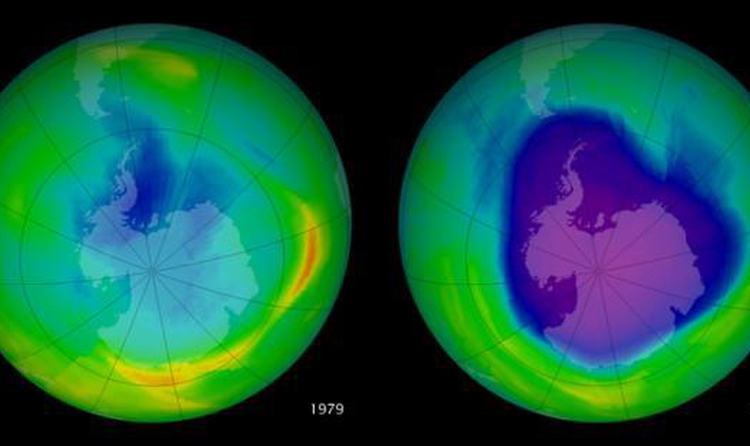The hole in the ozone layer was not an exaggeration: the problem was solved by banning the gases that caused it

The Montreal treaty made it possible to reverse the problem and prevent it from having consequences for humans.

There is a podcast currently making the rounds on the internet that has over 700 listens on Ivoox and is also available on Spotify, which states that, since the hole in the ozone layer did not end up “burning us all to a crisp” – alluding to the predictions allegedly made by scientists in the 1970s and 1980s – climate models are also flawed and climate change projections are equally as dubious.
This is MISLEADING. The predictions were not wrong. The ozone layer could be restored thanks to the banning in 1989 of several types of gases known as chlorofluorocarbons, which were causing the depletion of the ozone layer.
[The models] don’t get a single [prediction] right. The hole in the ozone layer was going to burn us all to crisp and yet we’re all still here.
In the 1980s, the hole in the ozone layer was a hot topic. However, just a few years later, the issue disappeared from the news, which created some confusion about the outcome of this environmental disaster. This may have led some people to believe that the problem of the hole in the ozone had remedied itself in a natural way without any human intervention and that, therefore, the models that predicted the disaster were flawed.
This happened, for example, in the aforementioned podcast in which one of the guests stated that “the hole in the ozone layer was going to burn us all to a crisp and yet we’re all still here”, and thereby turned the situation into an example of the climate models, which predict future trends of various aspects of climate and their impact, “[not getting] a single [prediction] right”.
However, this reasoning leaves out that the reason the hole in the ozone layer closed and disappeared from the front pages of newspapers was, in fact, due to the entire international community adhering to the Montreal Protocol in 1987 and banning chlorofluorocarbons (CFCs), the gases that were causing the damage. “Hundreds of thousands of skin cancer cases have been avoided thanks to the measures that were taken in the Montreal Protocol to eliminate CFCs and stop the destruction of the ozone layer”, Alberto Redondas, head of the Spectral UV and Ozone group at the Atmospheric Research Centre of Izaña of Spain’s National Meteorological Agency (Aemet), explains to Verificat.
The Montreal Protocol was the only treaty that has ever been ratified by all 197 UN member states, according to the organisation.
What are chlorofluorocarbons?
Chlorofluorocarbons started being produced industrially in the 1930s and they were mostly used for dry cleaning, refrigeration and in aerosols such as deodorants and lacquers. Unlike other greenhouse gases (GHG) – which can be found in both natural and artificial forms in the atmosphere, such as CO2 or methane – the CFCs damaging the ozone layer were created by human beings.
However, during the 1970s, voices from within the scientific community were warning about the damage that these gases could cause to the ozone layer, located in the stratosphere (15 to 50 km above the surface of the earth). The first scientists to do so were the chemists Frank Sherwood Rowland and Mario Molina of the University of California, Irvine (UCI), who observed that sunlight was degrading CFCs and releasing chlorine, an element that could “perforate” the ozone layer. Each active atom of chlorine is capable of destroying up to 10,000 ozone molecules. Their conclusions were published in Nature magazine in 1974.
In 1985, scientists of the British Antarctic Survey published another study in which they stated that they had discovered “large losses” of the ozone above Antarctica. It is what became commonly known as the hole in the ozone layer. Four years later, in 1989, all 197 member states of the United Nations pledged to stop using the polluting gases that caused this damage.
Man-made gases
Ever since the treaty was signed, those toxic gases were replaced by new ones, also man-made, known as hydrofluorocarbons (HFCs) and perfluorocarbons (PFCs).
Although harmless to the ozone layer, they have very high “‘Global Warming Potential’ (GWP) in comparison to other greenhouse gases”, according to the US Environmental Protection Agency (EPA). For that reason, they say that “even a low atmospheric concentration can have disproportionately large effects on global temperatures”.